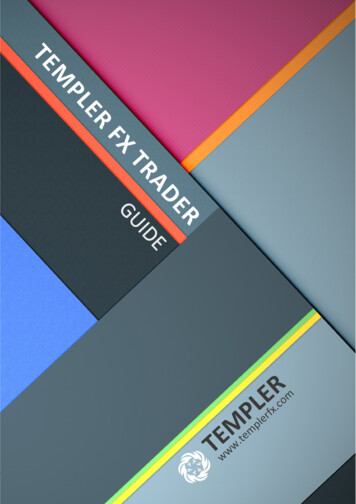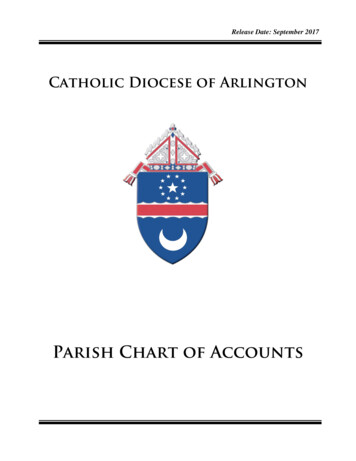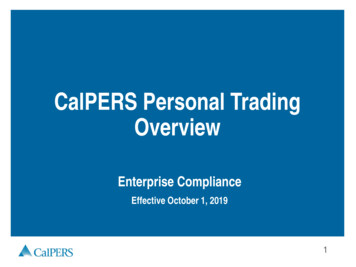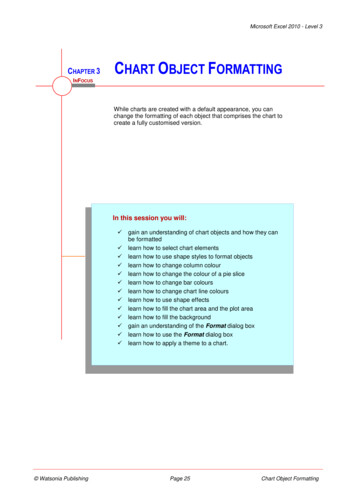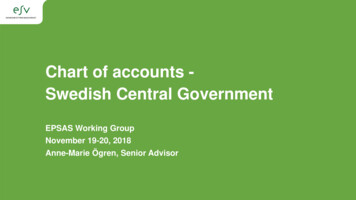
Transcription
Chart of accounts Swedish Central GovernmentEPSAS Working GroupNovember 19-20, 2018Anne-Marie Ögren, Senior Advisor
The Swedish Public Sector and administration
Organisation of Central governmentThe peopleMostcountriesGovernmentParliamentThe The Riksdag(Parliament)
Central government organisationTHE RIKSDAG(Parliament)GOVERNMENT10 ministriesThe Riksbank(Central Bank)The SwedishNational AuditOfficeMinistry of FinanceGovernmentagenciesThe SwedishNational FinancialManagementAuthority (ESV)Statistics SwedenThe SwedishNational DebtOfficeThe NationalInstitute forEconomicResearchSwedish FiscalPolicy Council
The collection and consolidationof financial dataSeparate accountingsystems at 230government agenciesDatabase foraggregated centralgovernment financialdataESV’s qualityassurance &processingAggregated financialinformation indifferent dimensions
A recommended Chart of accounts– Agencies can use the recommended chart of accounts when they buildup their own chart of account– It is based on the concept used by private companies– Most of the agencies use this recommended chart of accounts butdifferent agencies can choose different accounts from the recommendedaccounts– Every agency s chart of account has to be linked to mandatory reportingcodes, S-codes
A mandatory plan of reporting codes– The plan of reporting codes are mandatory.– The S-codes are conducted to be used for budget follow-up, reporting tonational accounts and for the annual consolidated whole of Centralgovernment accounts.– There are special S-codes for internal transactions within Centralgovernment.
Plan of codes, S-codes, reporting groups1 Assets2 Liabilities and capital3 Revenue4 Employee costs5 Cost of premises, office services, external services6 Sales of assets, Depreciation7 Collection of taxes, transfers8 Change in capital
1 Assets– Intangible fixed assets– Receivables– Tangible fixed assets– Cut-off items (deffered– Financial fixed assetscharges and accrued income)– Lending– Current investments– Inventories– Cash and bank
2 Liabilities and capital– Capital– Provisions for pensions– Other provisions– Liabilities– Cut-off items (accrued expenses and deffered income)
3 Revenue– Revenues from appropriations– Income from fees– Income from contributions
4 Employee costs– Salaries– Social costs– Training costs for employees– Other employee costs
5 Other current costs– Cost of premises– Cost of goods– Cost of services– Financial costs
6 Sales of assets, Depreciation– Sales of assets– Depreciations– Impairments
7 Taxes and transfers– Collection of taxes– Collection of fees– Contributions (transfers) received– Submitted contributions (transfers)– Financial income
8 Change in capital– Results from participations in owned companies– Change in capital
Consolidation
Counterparty accounting– The agencies are obliged to register their counterpart, if it is agovernment agency, in the CG accounting system– The agencies are obliged to reconcile balances with another agency– The reconciliation is used to eliminating internal items, e.g.receivables/payables, contributions, revenue/expenditure
Inflow to ESV by agenciesMonthly reportingAnnual reporting– Use of appropriations– Revenue, Expenses– Report on revenues byrevenue items– Assets, Liabilities, Capital(Net Worth)– Payments made– Annual Report for theAgencyQuarterly reporting– Reporting on S-codes forfinancial statistics for NA
Outflow from ESVMonthly reportingAnnual reporting– The Central GovernmentBudget– Consolidated AnnualReport for CG– Cash flow– Other statisticsQuarterly reporting– Financial statistics for NA– Budget Forecasts- Outcome of Appropriations
Consolidated Whole of Centralgovernment accounts– Income statement– Balance sheet– Statement of cash flows– Disclosures– The Government budgetand government budget outcome– National declaration together withcontributions to and reflows from the EU
Anne-Marie ÖgrenAnne-marie.ogren@esv.se
A recommended Chart of accounts -Agencies can use the recommended chart of accounts when they build up their own chart of account -It is based on the concept used by private companies -Most of the agencies use this recommended chart of accounts but different agencies can choose different accounts from the recommended accounts
